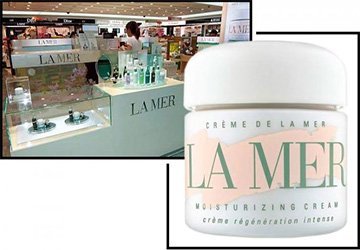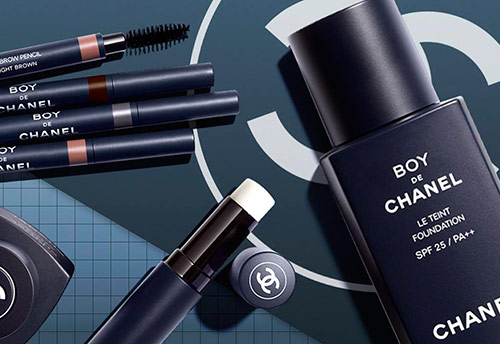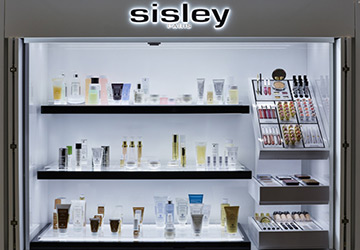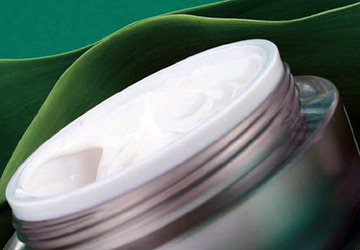Cosmetics and makeup
The history of cosmetics
"A woman without cosmetics is like food without salt"
Plato (ancient Greek philosopher)
The history of cosmetics is as long as the history of mankind. At the same time, at different times, cosmetics were given completely different meanings. Cosmetics could be used for both religious and decorative purposes, and could be applied by both men and women. Or, on the contrary, it could be prohibited.
The very word "cosmetics" is Greek. And, like the word "space", in translation it means "order" - order in the universe and order on the face. In ancient Greece, there were cosmetes - slaves whose duties included bathing Greek citizens in special baths with scented oils, and they also engaged in massage. The word "cosmetics" to refer to means for applying makeup was first used at the International Exhibition in Paris in 1867. It was in this year that soap makers and perfumers began to present their products separately from those of pharmacists.
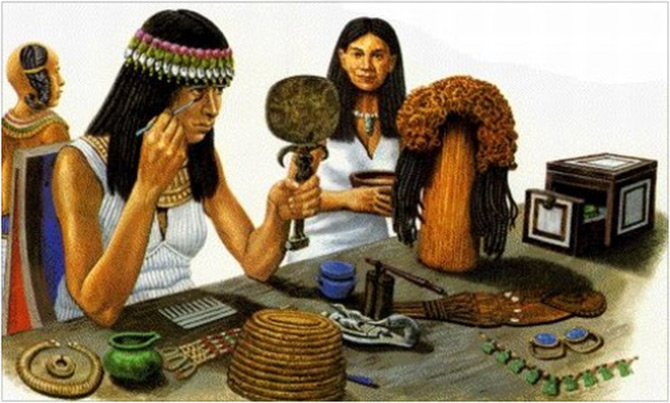
Cosmetics in Ancient Egypt
Cosmetics were used in ancient Egypt and the countries of Mesopotamia. So, in Mesopotamia already 5000 years ago lipstick was known. The ancient Egyptians also painted their lips. In ancient Egypt, a mixture based on animal fat with the addition of beeswax and red pigment or red clay was used as a lipstick. Lipstick in ancient Egypt most often had dark shades. In addition to lipstick, Egyptian women also used eye shadow, eyeliner, nails and hair.
Eyes in Ancient Egypt let down both men and women, while not at all with the aim of decorating themselves. In those days, it was believed that eyeliner protects the eyes from the penetration of evil spirits through them into the soul of a person. For eyeliner, the Egyptians used paints made from antimony (kohl is still used as an eyeliner in Muslim countries, it is a black stone, crushed into powder and usually diluted with castor oil) and soot.
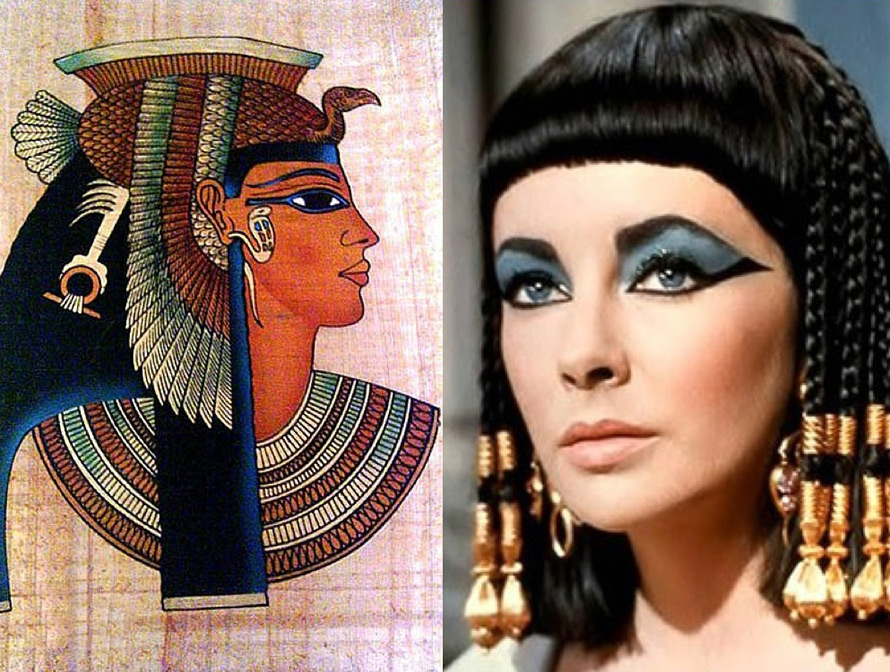
The eyelids were painted with grated malachite, a mixture of green copper and lead sulphide, ore. By the way, lead also scared away insects. Blush in Ancient Egypt was made from raw materials from plants and shrubs.
On their heads, the Egyptians wore oily aromatic cones, the wearing of which was already associated with practical needs - they protected from insects, which were numerous in the hot climate of Ancient Egypt.
The Egyptians painted their nails with henna, as evidenced by the mention of the most famous Egyptian queen Cleopatra. By the way, Cleopatra was very fond of cosmetics and even wrote a whole treatise on cosmetics called "Medicines for the skin."
The first written information about cosmetics is also associated with Ancient Egypt - the Ebert Papyrus - the first written document that contains advice on the use of cosmetics.
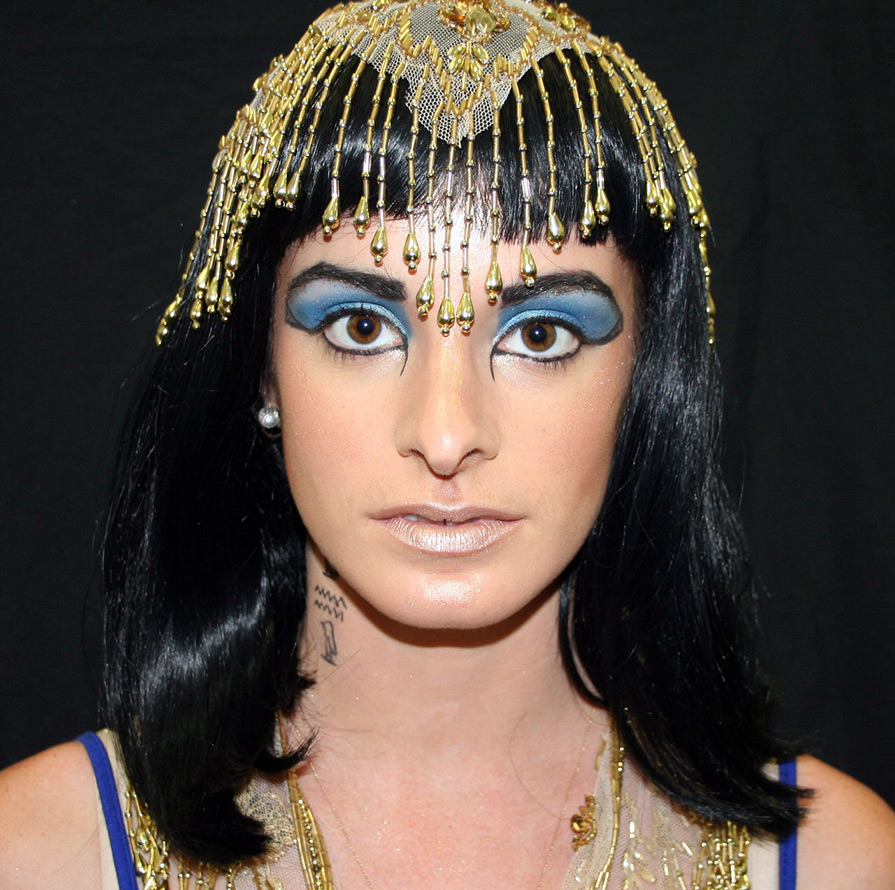
Cosmetics in Ancient Greece
In ancient Greece, cosmetics were also loved. You can read about cosmetics in Homer's Odyssey, and in the writings of the famous ancient Greek physician Hippocrates, who described a number of means that allow women to become even more beautiful.
Greek women painted their lips, blushed cheeks, lightened their hair. Greek girls made mascara from soot, lipstick from cochineal (herbal aphid), or with the addition of red lead pigments, cinnabar, which, by the way, are poisonous.
The doctor Claudius Galen will write about the toxicity of some cosmetics, and accordingly their harm, only later, in the days of Ancient Rome. After all, cinnabar is a mercury mineral, and red lead is a mineral that contains lead, no less harmful to health. However, Romans will still use their lipsticks.
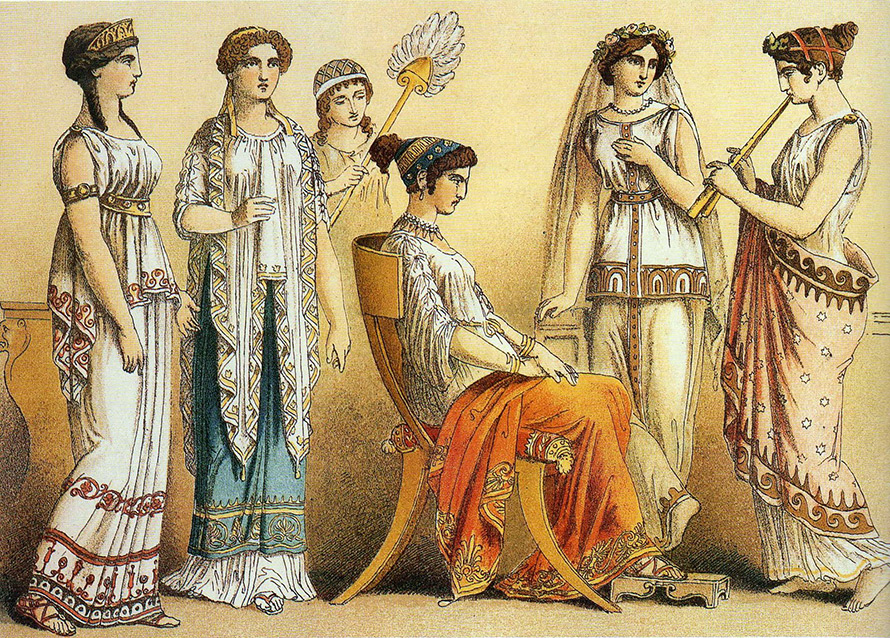
Ancient Rome and the history of cosmetics
In ancient Rome, in contrast to Greece, cosmetics were used not only by women, but also by men - they put lips and blushed cheeks.In ancient Rome, coal was used as an eyelid dye, fucus (seaweed), mainly red for the cheeks and lips, wax as a hair remover, barley flour and oil for acne removal, and pumice stone for whitening teeth.
The Romans spent a lot of time in baths, keeping the body clean, as well as in solariums, sunbathing.
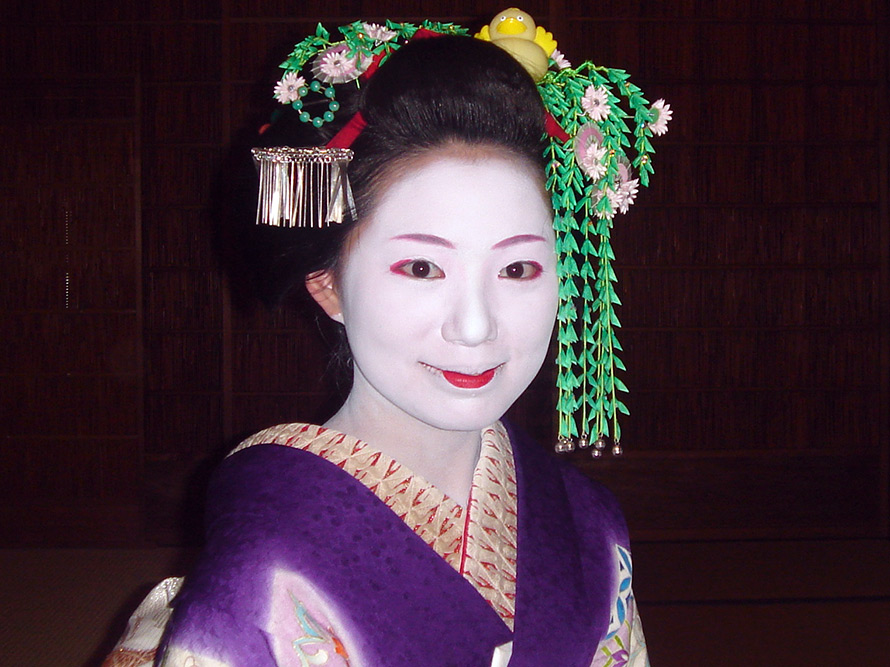
Cosmetics of Ancient Japan and Ancient China
In Japan, women whitened their faces, shaved their eyebrows and in their place made two thick lines with black ink or painted black circles. The forehead along the edges of the hairline was drawn with mascara and brightly painted lips. Green lipstick was used. Married women could paint their teeth with black lacquer.
Men also used cosmetics - they painted small antennae, used aromatic substances, took care of their fingers and toes, using steam baths.
The women of ancient China, just like the Japanese women, whitened their faces and applied blush to their cheeks, lengthened their eyebrows, grew long nails and painted them red.
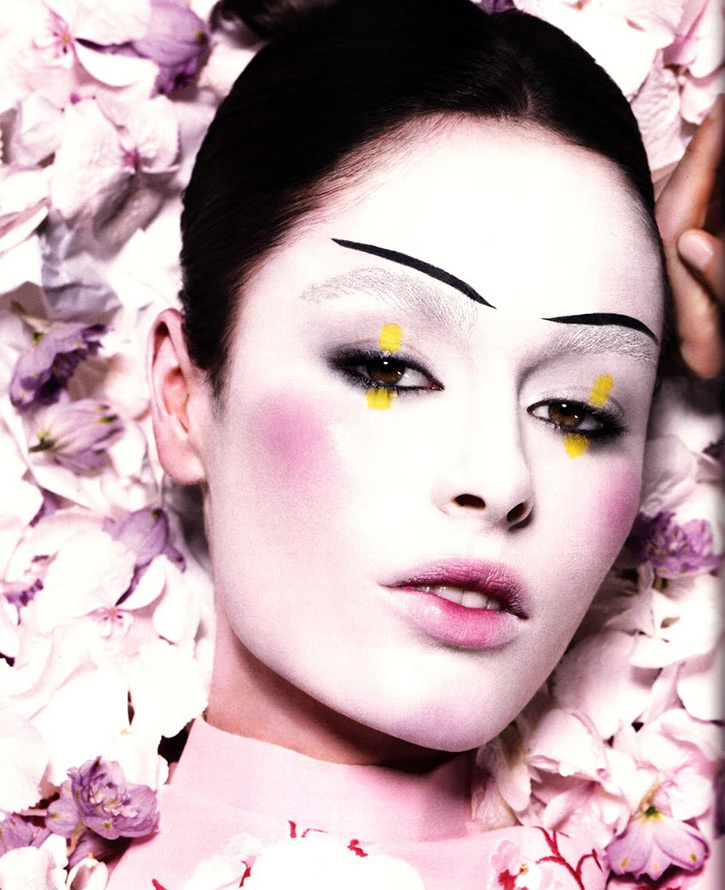
Modern makeup with elements of Chinese style
Medieval and cosmetics
In Medieval Europe, pale, untouched faces were considered fashionable, and the Catholic Church was strongly opposed to any use of cosmetics. After all, the main thing is mental beauty, but not physical. But, nevertheless, women still tinted their lips and blushed cheeks. The high forehead line also came into vogue - and the hair above the forehead could be shaved off, eyebrows and eyelashes plucked out. The fashion for a high forehead line will continue later - during the Renaissance.
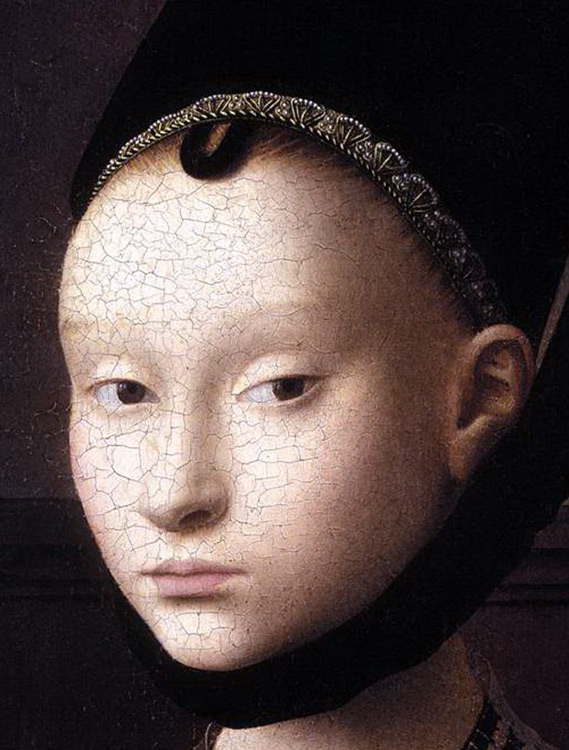
Revival
During the Renaissance (Renaissance), faces were painted with lead whitewash, lipstick, and also powder were used.
Arsenic-based powder was also sold in those days in Italy. This powder could be bought at the cosmetic shop of Mrs. Tufania from the Tofana family. Very smart customers could use this powder not only for cosmetic purposes, but also as a poison - by dissolving it in water.
Mrs. Tufania ended her life at the stake. But her business was continued by Teofania di Adamo, also from the Tofana family. Teofania is considered the inventor of the "aqua Tofanu" poison, the secret of which has not been revealed until now. This poison was tasteless and odorless. At the same time, he killed gradually, and the signs of poisoning could easily be confused with signs of a disease, for example, typhoid fever. The victims of the poison "aqua Tofanu" were mainly men - the husbands and lovers of the fatal Italians. Theophany was also executed by the Holy Inquisition.
XVII-XVIII centuries
In the 17th and 18th centuries - the Baroque and Rococo periods - fashion was set by the French court. Cosmetics were used in large quantities at that time. Used by both men and women - they painted lips with bright lipstick, blushed cheeks, whitened their faces - a pale complexion is still in vogue, powdered wigs, used a variety of aromatic substances and perfumes in huge quantities. Including in order to drown out the smell of an unwashed body, this is how the Spanish queen admitted, although back in the 15th century Isabella of Castile - in her entire life she washed only twice - at birth and on her wedding day.
Louis XIV, the French king of the 17th century, the sun king, also washed himself several times in his life - and then on the advice of doctors. In those days, the nobles only bathed - in the palaces there were basins of water, in which they caressed their hands and face. Therefore, the French aristocrats and ladies of those times did not smell of tuberose and lavender, but completely different smells. By the way, in Russia, even ordinary men have always loved to wash in a Russian bathhouse.
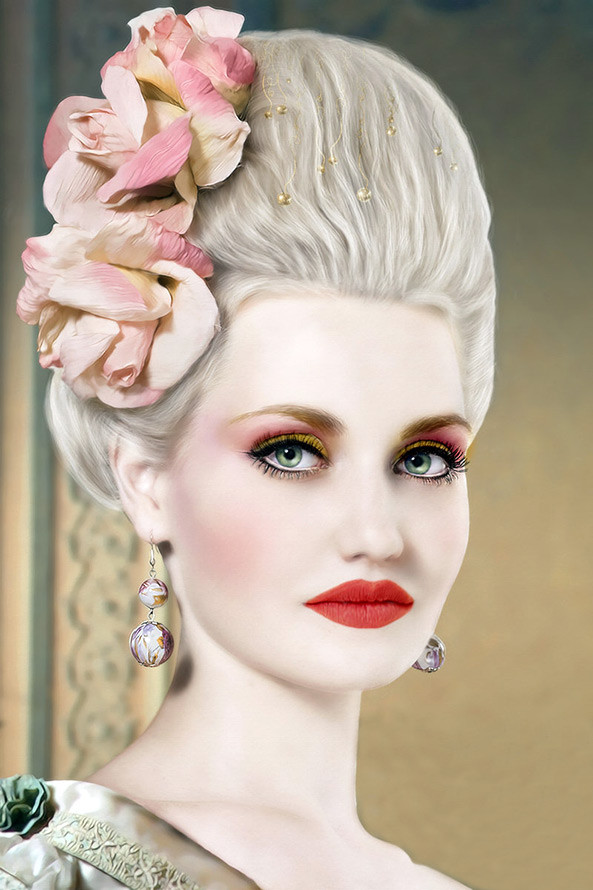
During the Rococo period the fashion for pale faces is intensifying - the faces are not only covered with whitewash, but also the lines of the veins were drawn with blue paint. At the same time, against the background of a pale face, lips and ruddy cheeks should have stood out with a bright red spot - both in women and in men. And all this combined with incredible hairstyles.
In England during the time of Queen Elizabeth I (reign November 17, 1558 - March 24, 1603), on the contrary, they tried not to use cosmetics, considering it unhealthy.At that time, it was believed that cosmetics did not allow the skin to evaporate moisture. The British also disliked cosmetics during the reign Queen Victoria (XIX century). However, the English women, in order to give their cheeks at least some blush before going out, mercilessly pinched them and bit their lips, in order to give them a brighter color.
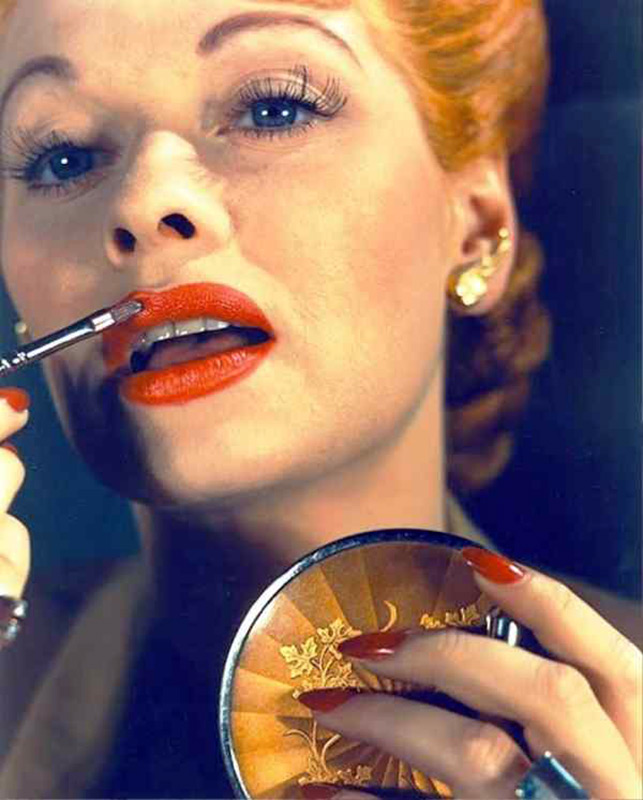
Cosmetics in the 19th century
In the 19th century, cosmetics will be used everywhere, and not only noble and wealthy women, as it was before, but also women with an average income. Cosmetics will become the lot of women, but not men, and its colors will cease to be bright and saturated, and will approach natural natural colors, with the help of which a healthy ruddy color was given to faces.
Excessive use of cosmetics and bright makeup will be strongly condemned. At the same time, bright and defiant makeup will become a sign of women of easy virtue. A similar conviction has survived in the minds of many to this day, although the 21st century is long ago.
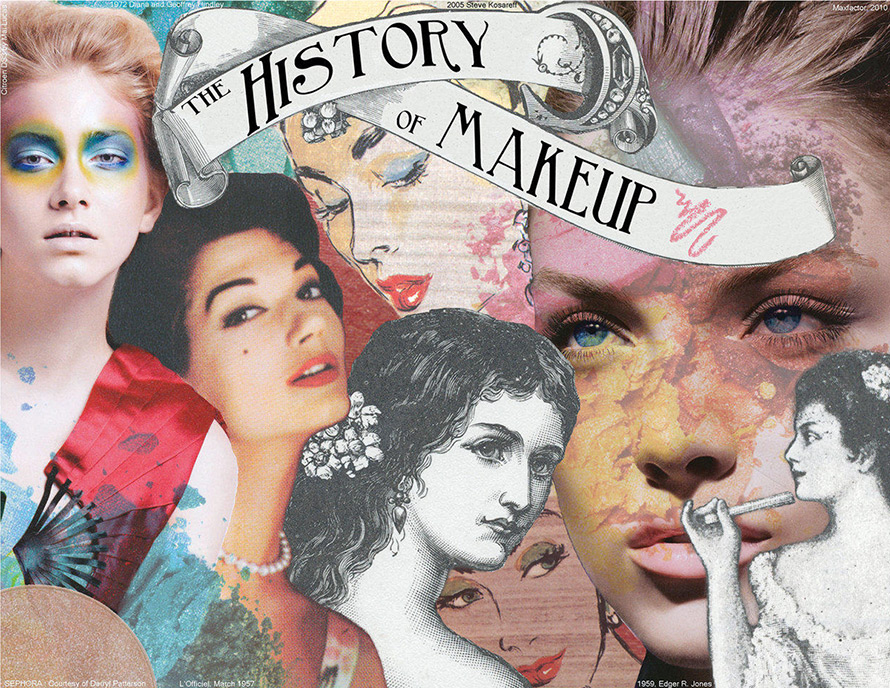
Pomade
The roots of the word fr. pommade, ital. pomata and lat. pomum - an apple, the color of lipstick is like the color of a ripe apple.
The first pencil lipstick was introduced in 1883 in Amsterdam, wrapped in silk paper. Lipstick in a tube was first presented by GUERLAIN. In 1915, lipstick in metal packaging appeared in the United States, which made its use very convenient. And already in 1949, machines also appeared in the United States for the production of lipstick in metal, and later in plastic tubes. In this form, lipstick is produced to this day.
Mascara was first released in the 19th century by an English merchant originally from France, Eugene Rimmel. And the word "rimmel" to this day in many languages - Turkish, Romanian, Portuguese - means ink. Eyeshadow began to release Max Factor company, the first eyeshadow by Max Factor was developed on the basis of henna.
The first foundation was also developed by Max Factor in 1936.
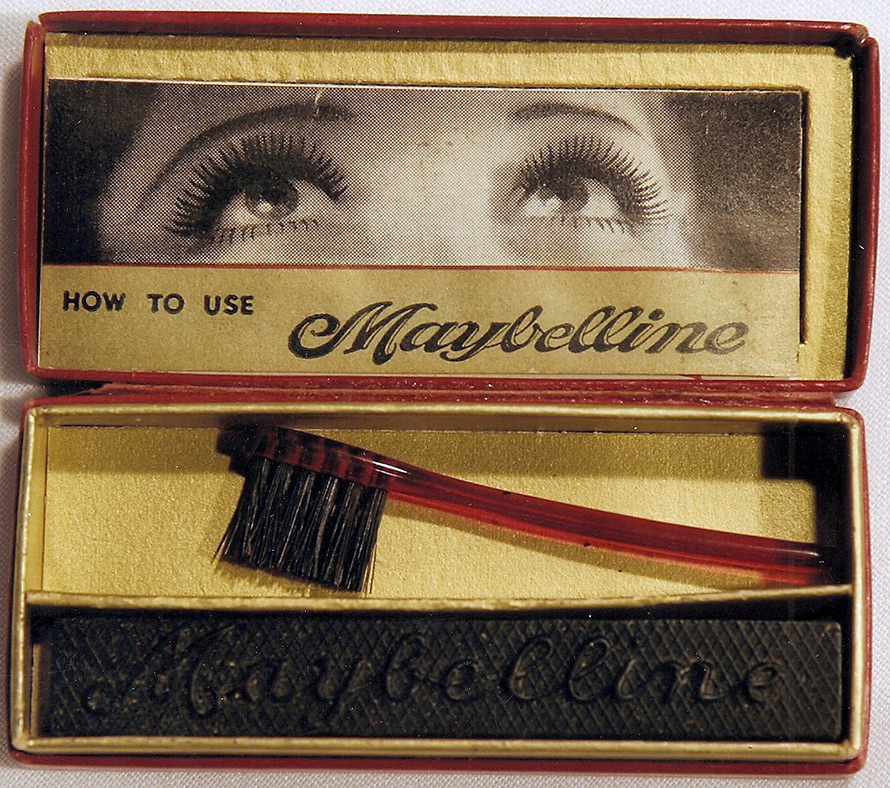
Comments and Reviews
Add a comment
Rating news
Shades of clothing that make women look younger
What shades of hair make women younger: rules and photos
Funny wedding dresses - photos and ideas
12 most expensive down jackets for the winter
How to look 25 at 40: tips from supermodels
Beautiful schoolgirls
Anti-aging haircuts and hairstyles for women
Fashionable skirts for autumn and winter
Fashionable women's trousers for the cold season
Fashionable and stylish sandals for summer 2024
Spring-summer 2024
 Fashionable dresses and tops with thin spaghetti straps
Fashionable dresses and tops with thin spaghetti straps
 Bandana tops: how to wear stylishly and beautifully
Bandana tops: how to wear stylishly and beautifully
 How to put together the perfect men's wardrobe for the summer
How to put together the perfect men's wardrobe for the summer
 Fashionable shorts for spring-summer 2024
Fashionable shorts for spring-summer 2024
 Fashionable skirts for spring-summer 2024: a guide to online shopping
Fashionable skirts for spring-summer 2024: a guide to online shopping
 The most fashionable dresses spring-summer 2024: styles and colors
The most fashionable dresses spring-summer 2024: styles and colors
 Fashionable total look 2024: ideas of images and trends
Fashionable total look 2024: ideas of images and trends
